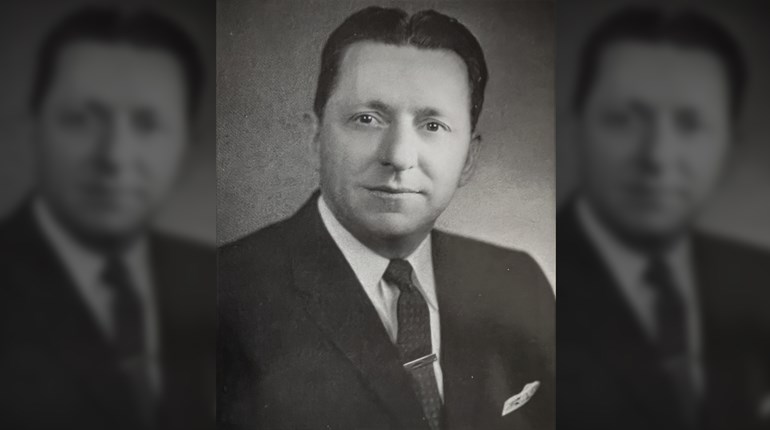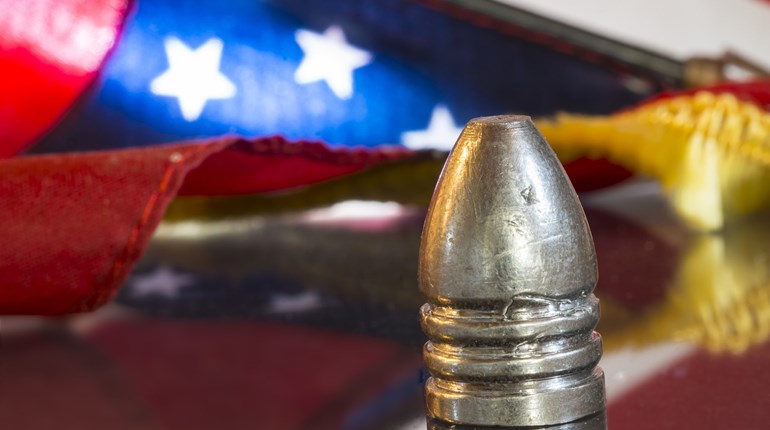
If you think of yourself as a trendsetter because you sport an unusual hairstyle, various tattoos or multiple body piercings, don’t be too smug. Eastern Woodlands Indian warriors were adorning their bodies in similar ways more than three centuries ago. (Sorry to burst your bubble.)
Eastern Woodlands Indians were not a single tribe, but rather a grouping of tribes, defined as those indigenous peoples living mainly east of the Mississippi. Made up of dozens of major tribes and hundreds of lesser-known ones, they were Indians who lived similar lifestyles.
A large part of that lifestyle included warfare. Enemy tribes had been battling each other for hundreds of years before European settlers began arriving on the eastern shores of North America. But that warfare took on new levels of frequency and intensity once those same Europeans began gradually migrating westward across the continent. The newcomers had an insatiable lust for land, and the bloody battles waged by the Indians to defend against that lust would rage for the next 400 years.
That said, Eastern Woodlands Indian boys were trained as warriors from an early age. At just five or six years old, sometimes even younger, they were given their own set of bow and arrows—size-appropriate, of course—and encouraged to practice by shooting targets at various distances. Unlike most bows today, Indian bows had no sights. Sighting was done “instinctively,” the boys learning to launch an arrow that would hit a target through trial and error.
The young warriors-in-training naturally graduated from target shooting to hunting small animals: squirrels, rabbits, birds. Some of the older boys became such proficient archers that they could even bring down birds on the wing. Regardless of what they killed, the unlucky critter was always taken home and added to the family’s simmering stewpot. Praised by their parents for such accomplishments, the boys were learning to be providers; not only for their families, but for the elders of their village who could no longer hunt for themselves.
Once an Indian boy mastered the bow and arrow—usually by the time he was in his early teens—he was then taught to shoot a firearm. At the time, flintlock muzzleloading muskets and rifles were the cutting edge of firearms technology. Muskets were smoothbore long guns that fired a round lead ball, a charge of buckshot or a combination of the two, known as loading “buck and ball.” Those primitive guns were accurate to only about 50 yards. Muzzleloading rifles, on the other hand, because of their rifled barrels, had an effective range of 100 yards, possibly even double that distance in the hands of a skilled marksman.
Indian boys, like all boys, constantly wrestled with one another during childhood, so they knew the basics of hand-to-hand combat. But as they grew older, they were also taught specific combat skills with knife, tomahawk and war club. Doing much of that teaching was a boy’s uncle(s), rather than his father. Although fathers had considerable influence over their sons' lives, it was thought that uncles could be more objective of a young person’s progress in attaining fighting skills and knowing when the young man was ready to be called a warrior.
Achieving warrior status was a great honor in Indian culture, a major life milestone. In preparation for induction into warrior society, all the hair on a young man’s head was plucked, except for a small patch on the crown. It was this “scalp lock” that would hold the hair roach containing hawk, grouse, woodpecker, blue jay, wild turkey or other colorful feathers.
If you happened to be of the Mohawk tribe, you got to keep a little more of your hair. Only the hair on the sides of the head was plucked, leaving a narrow strip running from front to back, the hair at the front of the head usually left longer than the rear. That particular hairstyle is with us yet today: mohawk, spelled with a lower-case “m.”
In addition, new warriors in some tribes had their ear lobes pierced multiple times, to hold various earrings. In other tribes, the outer edge of the ears were sliced through and wrapped with a thin lead wire, which was thought decorative. The downside of that process was that the ears then stuck out from the sides of the head to the extent that warriors had to use a small leather cord to tie their ears together behind their head during times of battle. Nose septums were also often pierced to hold a dangling piece of silver jewelry or possibly a feather.
Tattoos came later in a warrior’s life, as his victories in war mounted. In the book The Historical Art of Robert Griffing, author Michael Galban writes, “Warriors carried with them visual evidence of their status. Tattoos were worn as a record of their accomplishments and deeds in life. They were marks of distinction by which the man would come to be known … The practice of tattooing was so common among the men that it was unusual to find someone without tattoos.”
Body painting was used at different times and in different ways. In preparation for battle, warriors might paint themselves in garish red and black from head to toe; red representing blood, black representing death. It was meant to intimidate an enemy, and if that enemy happened to be a young white soldier or settler who had never seen an Indian before, it definitely worked. However, when preparing for times of council, warriors might use more subtle, earth-tone colors, and paint just their faces, the overall effect intended to be much more decorative and dignified than menacing.
Eastern Woodlands Indian warriors were nearly always male, but there is at least one historical exception of note. Nonhelema was the sister of Cornstalk, the principal peace chief of the Shawnees. Her name translates to English as “not a man.” The whites called her the Grenadier Squaw because of her large size. She was muscular, well proportioned and handsome (if not particularly pretty); always carrying herself in a self-assured, almost regal manor. Not many Indian women fought alongside their male compatriots, but there were a rare few, and Nonhelema could fight with the ferocity of any warrior. The French said of the hit-and-run tactics of the Indians, “They came like foxes, attacked like lions, and fled like birds.”
The fact that Nonhelema fought at all is surprising; not only because she was a woman, but because she was considered a peacemaker. Highly respected by both Shawnee men and women, she was also the chief of a large Indian village in the Ohio country, known as Nonhelema’s Town, and a leader of the tribe’s women’s council.
When she fought, she dressed just as the male warriors did: stripped to the waist, wearing only a loincloth, leggings and moccasins, her painted body smeared with bear grease to make it difficult for an enemy to grab hold of her in combat.
During the American Revolution, Nonhelema sided with the Americans over the British, believing that the American Long Knives would somehow eventually defeat their white English brothers. It was a long-shot, but she took the gamble, always with the thought in mind of what was best for her people, the Shawnees. As it turned out, Nonhelema was right.





































